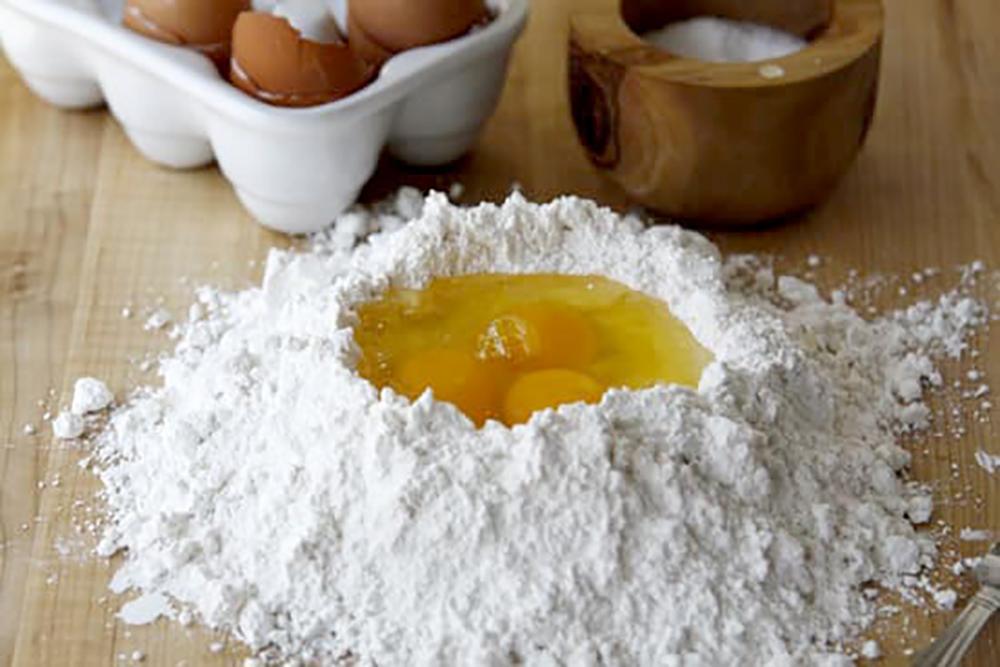By Chef Joseph Massaglia
Did you know that in Italy there are over 350 known pasta shapes with over 400 regional names? However, despite the shape and/or the name, they all have one thing in common. The best Italian pasta is made with 100% white durum semolina flour.
This type of flour is made from the soft wheat variety and is lowest in gluten content. The 00 (double zero) stands for the level of refinement or grinding, not the gluten content – 00 is the finest grind of all the flours and 2 is the coarsest. Here in the United States, pastry flour is closest to 00 flour.
In America, 60% of all wheat grown is considered hard wheat, which has a higher gluten content. Gluten content in flour is important because if you’re making bread or pizza dough, you want strong or higher gluten to make your bread or pizza dough rise and hold its shape, and you want soft or lower/weaker gluten flour when making pasta so your noodles are thin and uniform.
The bag of all-purpose flour in your pantry is a blend between the two varieties. It contains mostly the hard and red variety with some soft and white mixed in. In a pinch it can be used to make almost any recipe, but to achieve optimal results in your baking and cooking, I highly recommend using the appropriate specialty flour called for in the recipe.

In fact, at Mama Mia’s Restaurante, I use two different gluten content flours – the higher gluten coarser grind (similar to bread flour) for all our pizzas and the softer 00 flour for making our raviolis and other specialty pastas.
If you’ve never made fresh pasta at home, I encourage you to try it. There are recipes and tips all over the internet and, of course, in cookbooks. You really don’t need any fancy equipment, but you do need a good amount of counter space, a friend or family member or two to help, and a little bit of patience.
A good, fresh pasta is made with flour, eggs and salt. You can make it on the counter “Italian” style, or in a food processor. Once you make the dough, you knead it until it is smooth and elastic, at least 10 minutes. You then can put it through a pasta machine or roll it by hand until you reach the desired thickness. (Note: Don’t let your dough dry out while you are working with it. Make several small balls and then keep them covered with a towel or plastic wrap until you’re ready to use them.) Once your pasta is cut or shaped, let it sit for 30 minutes to “cure,” then proceed with your recipe.
Whatever recipe you use and whatever shape you choose, you and your family will love it – such a difference over pasta out of the box!
Be well, stay safe, and please continue to support your local restaurants.
Buon Appetito!
Joe’s Table for Two radio show airs Saturday mornings from 10 a.m. to 1 p.m. on WOND 1400 AM. Website: joestablefortwo.com. Facebook: Joe’s Table for 2. Contact Joe:
joestablefortwo@gmail.com.






